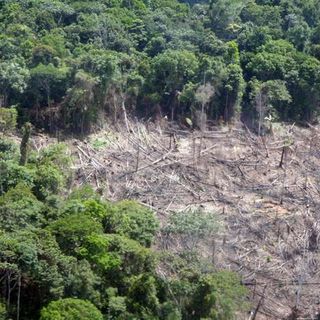A new study has found that farming is driving the rise of nitrous oxide (N2O) emissions worldwide, threatening our ability to meet the goals set by the Paris Agreement to tackle climate change.
Published in Natureyesterday, the study found that emerging economies like Brazil, China, and India are demonstrating some of the highest increases in N2O emissions due to intensive livestock and grain farming.
N2O has a heating effect nearly 300 times that of carbon dioxide (CO2), another so-called greenhouse gas, and lasts many more decades in the atmosphere than methane, also a greenhouse gas. N2O breaks down in the stratosphere to react with ozone and has now become the largest ozone-depleting substance emitted through human activities. For decades, it received less attention due to the focus of environmentalists on CO2 from the burning of fossil fuels.
At present, the level of N2O in the atmosphere is 20% higher than pre-industrial times — with the fastest growth observed in the past five decades. Farming has contributed to most of the increase, not only due to the overuse of synthetic fertilizers, which make up about two-thirds of the emissions, but also from organic sources such as livestock manure deposited in pastures and rangelands.
Related on The Swaddle:
Microplastic Pollution Is Damaging Soil Species That Ensure Its Fertility: Study
A 2018 study in the Indian subcontinent found alarming levels of N2O emissions from rice cultivation. And, reportedly, the use of nitrogen-based fertilizer in India has led to a sharp rise in N2O emissions in the past 30 years. “The dominant driver of the increase comes from agriculture and the growing demand for food and feed for animals will further increase global nitrous oxide emissions. There is a conflict between the way we are feeding people, and stabilizing the climate,” Hanqin Tian, lead author of the study, told The Guardian. In India, 70% of rural households depend on agriculture. So, simply cutting down on farming to curb N2O emissions will endanger the livelihoods of many, not to mention food supply for everyone else.
However, there are ways to minimize N2O emissions without sacrificing production, and therefore, livelihoods and food supply. N2O is released when microbes present in the soil break down excess fertilizer, especially in boggy or over-wet ground, which has less oxygen in the soil. So, by targeted usage of fertilizers to cut down on their use, and by using them only in the right weather conditions, could curb emissions, experts suggest. In the past, researchers have also recommended designing pricing policies for artificial fertilizers to influencing farmers’ preference towards specific chemical combinations that don’t contribute to increased N2O levels.
“We have the tools to reduce this problem. This is not insurmountable. But these practices need to be adopted more widely. We don’t have to sacrifice production, just make sure it is managed more carefully,” Parvadha Suntharalingam, who co-authored the paper, noted.




